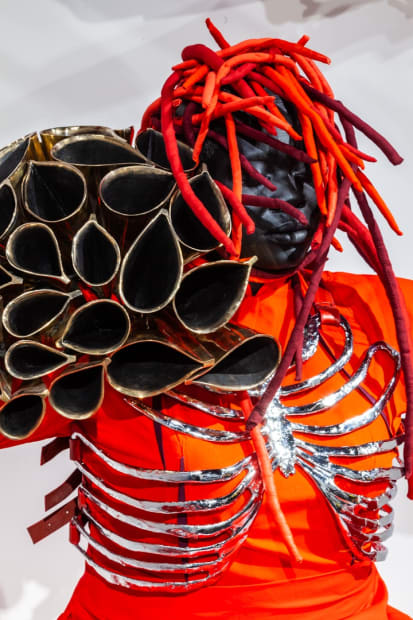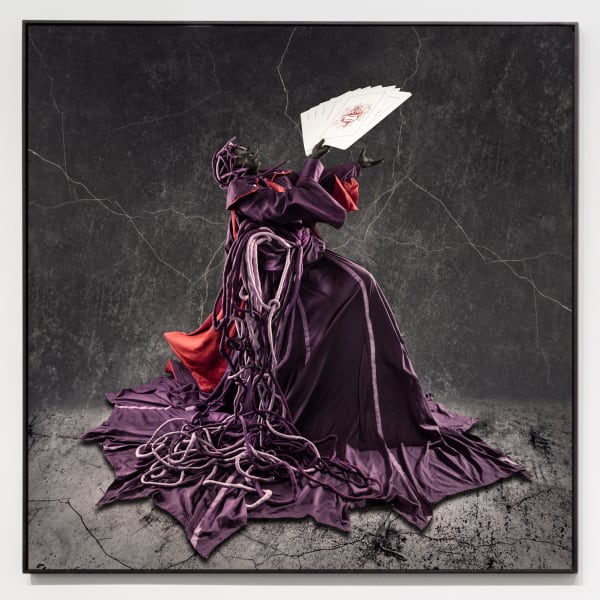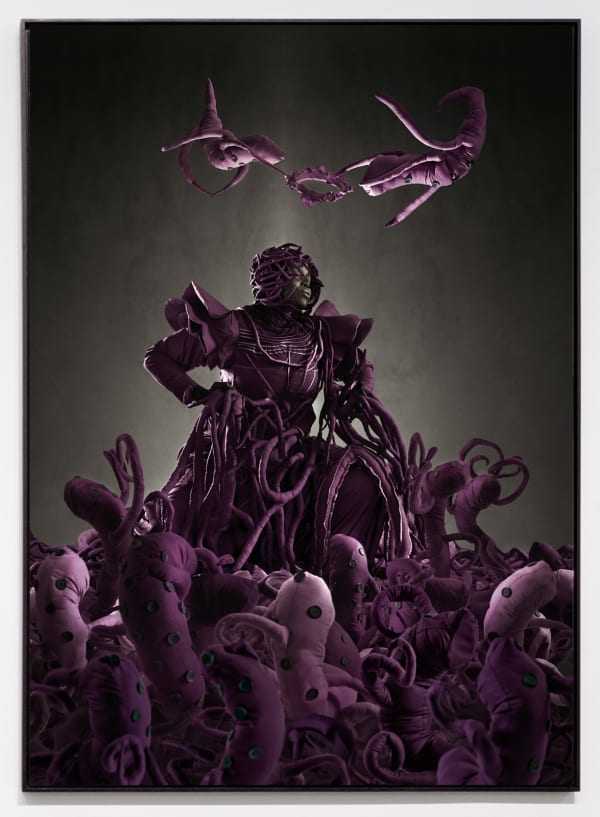-

-
This installation reflects on the legacy, or aftermath, of Apartheid in South Africa. The work is a pseudo-psychological investigation, exploring a suppressed and yet ubiquitous emotion: anger. At the core of the work is the preservation of the heart. Among people who speak isiZulu, and more broadly iNguni, the heart is associated with a wide spectrum of emotions such as anger, impatience, and intolerance. The color red has many metaphorical associations, from spiritual to blood. According to a common Zulu expression, an angry person is a “red dog.” The emotive quality of anger relegates the individual to the realm of the animal, belonging outside humanity. There is also a nihilistic perception of anger; the emotion manifests in destruction, including that of the figure who harbors it.
-
-

-

-
ABOUT THE ARTIST
Mary Sibande (b. 1982, South Africa) is a sculptor, painter, and installation artist whose work not only interrogates the current intersections of race, gender, and labour in South Africa, but continues to actively rewrite her own family’s legacy of forced domestic work imposed by the then-Apartheid state.
Through photography and sculpture, Sibande employs the human form as a vehicle for a focused critique of stereotypical depictions of women, especially Black women in South Africa. For Sibande, the body, and particularly how we clothe it, is the site where history is contested and where Sibande’s own fantasies can play out. Sibande’s counter-history takes the form of an alter-ego in her work, a persona by the name of Sophie, who is dressed in various uniforms that resemble those worn by domestic workers. Turning these dress styles into Victorian motifs, Sibande reanimates Sophie’s history in the ways her body is adorned and her occupation of the narratives that were stolen from and denied to her. This is not just a political act, but one of transformation, as Sophie takes on new incarnations unbound from the history of servitude and labor as it extends to present domestic relationships. Transitioning from blue to purple to red, Sibande introduces us not only to the many faces of herself and "Sophie," but to the complex personhoods of African women who continue to create worlds and narratives outside of the Western imperialist canon.
In newer works, we witness "Sophie" as the High Priestess becoming the space between two realms: between the past and future, between what has been and what could be. She is fleeting, a personification of mystery and spirit that is unknown to the rational world. In her work, Sibande offers insight into the past, present, and future, interpreting biblical and philosophical wise texts into personal visions and prophecy. The Priestess represents magic and possibility through ancient cultural practices associated with sorcery, the traditions of which continue into the present day. Most importantly, Sibande attempts to exploit supernatural forces by summoning the spiritual and medicinal role inherent to magic and its rituals, gestures, and languages.
Mary Sibande
Past viewing_room
















